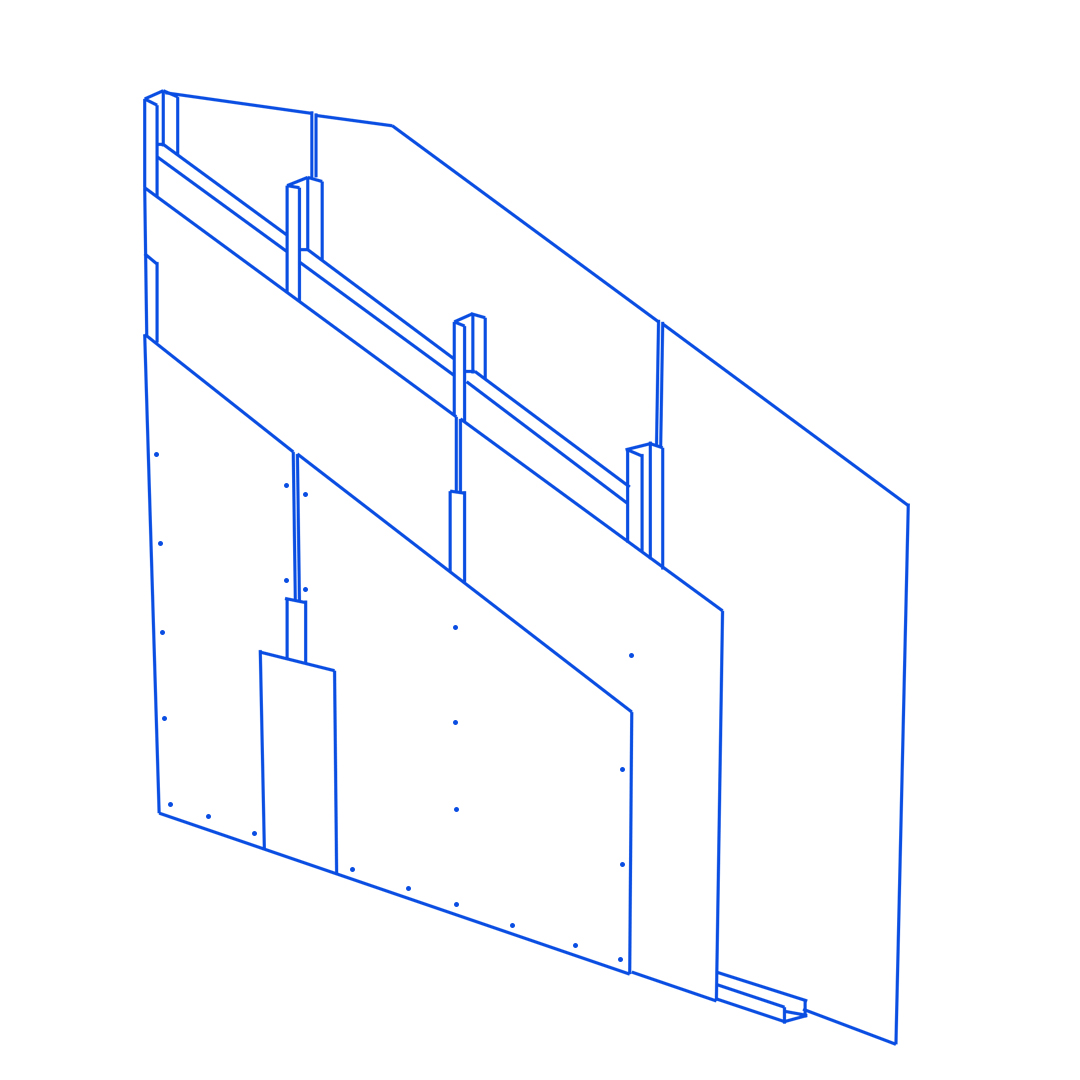
Lightweight partition walls offer a superior alternative to standard partition walls, combining significantly faster and easier installation with enhanced soundproofing and fire resistance. Additionally, their thinner design maximizes usable space within your home.
Lightweight partition walls offer a superior alternative to standard partition walls, combining significantly faster and easier installation with enhanced soundproofing and fire resistance. Additionally, their thinner design maximizes usable space within your home.
Prefabricated partition walls typically consist of a metal or wooden substructure, clad on both sides with one or more layers of plasterboard, and filled with mineral wool. All types of plasterboards are made from gypsum and recycled paper, making them a raw material that conserves natural resources.
Any additional modifications and reconfiguration of space are significantly easier, as plasterboard walls can be quickly and easily dismantled or repaired without the need for demolition.
This flexibility enables adaptable functional room divisions to meet specific needs, without the necessity of undertaking a dedicated reconstruction project.
Partition walls built using drywall construction methods are 8 to 10 times lighter than brick walls of the same thickness, yet they match brick walls in terms of load-bearing capacity.
Anything you plan to place on these walls—shelves, pictures, or a TV—can be installed without any limitations.
Drywall construction allows you to transform your home’s layout entirely, creating a new arrangement of spaces in just a few days.
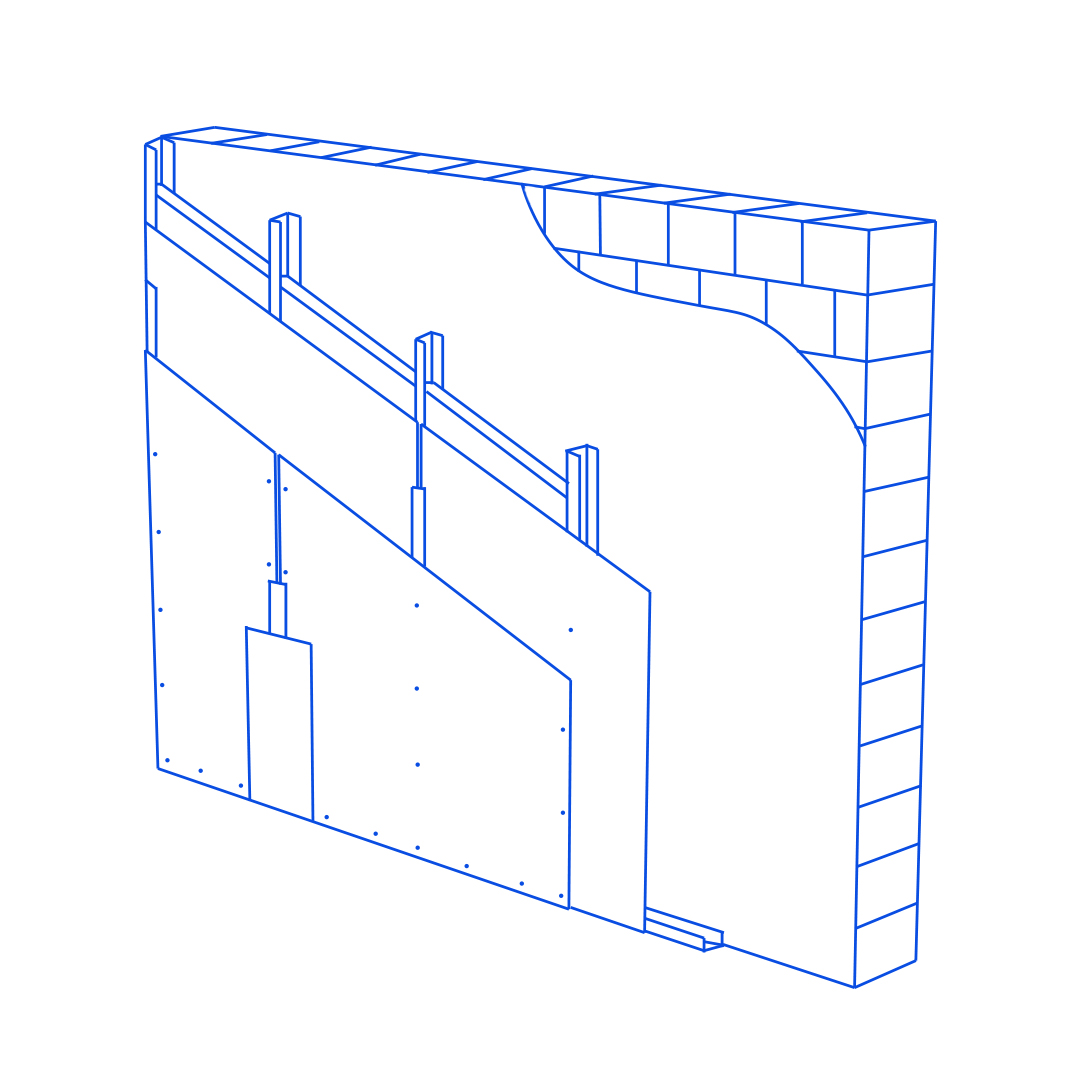
Wall linings and shaft walls are lightweight and slim, making them a superior choice compared to traditional masonry walls. They can also be easily replaced in the event of damage to plasterboard or other components.
Wall linings and shaft walls are lightweight and slim, making them a superior choice compared to traditional masonry walls. They can also be easily replaced in the event of damage to plasterboard or other components.
These systems can be installed at varying distances from the load-bearing partition wall to meet specific requirements, delivering an optimal solution for concealing installations and maximizing efficiency.
Wall lining and shaft wall systems offer numerous advantages over other systems. They are quick and easy to install, requiring minimal time and no specialized qualifications.
These systems can be applied directly to unfinished surfaces, such as masonry or concrete walls. An additional benefit is the ability to proceed with final finishing almost immediately, eliminating unnecessary delays.
Wall lining and shaft wall systems serve three primary purposes:
Wall linings typically consist of a metal or wooden substructure with single-sided lining made of plasterboard and mineral wool core. All types of plasterboards are made from gypsum and recycled paper, a raw material that helps conserve natural resources.
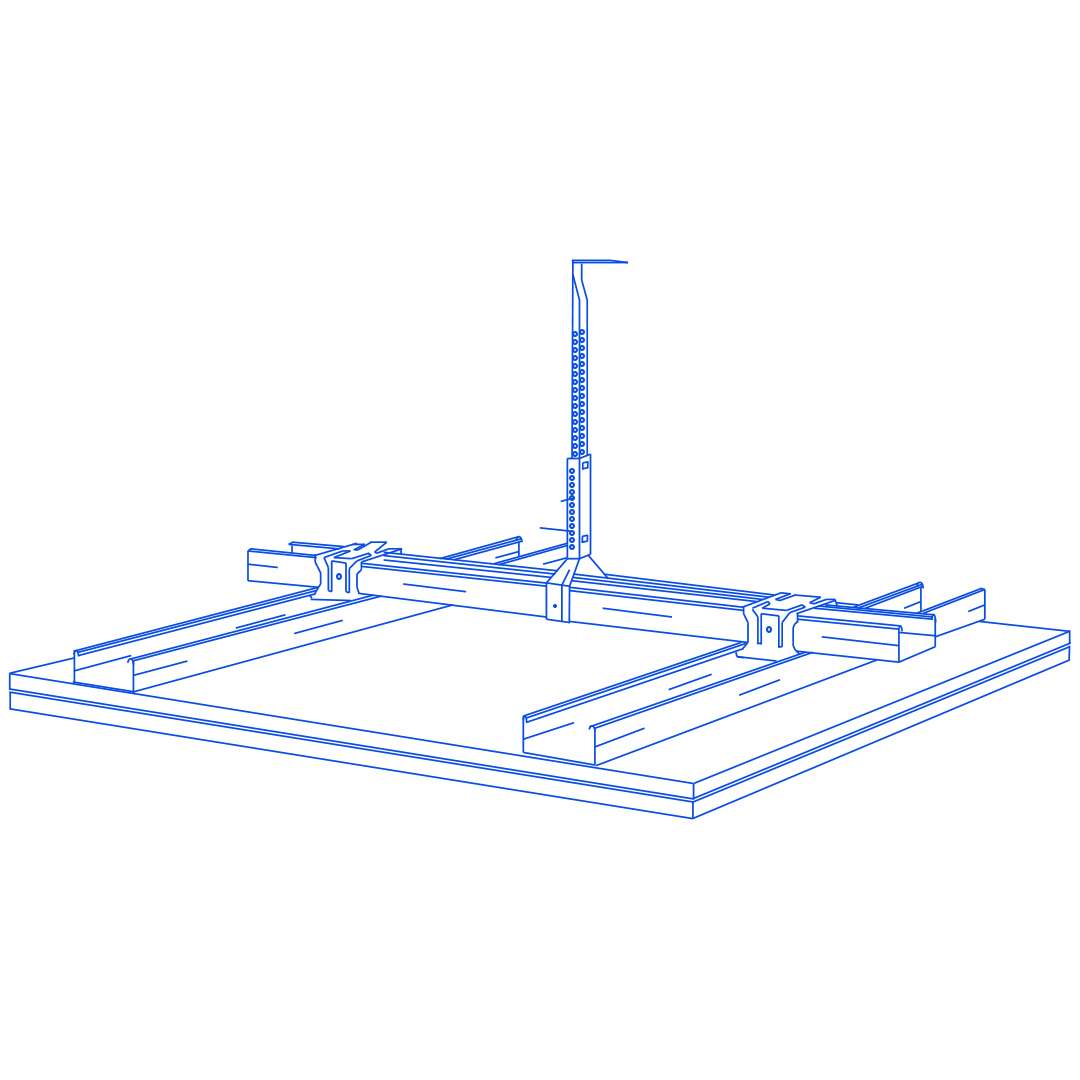
Ceilings or suspended ceilings are installed for aesthetic reasons (to level uneven surfaces or to cover insulation and installations) or for functional purposes (to improve fire protection of the ceiling structure, enhance room acoustics, or increase sound insulation of the floor structure).
Ceilings or suspended ceilings are installed for aesthetic reasons (to level uneven surfaces or to cover insulation and installations) or for functional purposes (to improve fire protection of the ceiling structure, enhance room acoustics, or increase sound insulation of the floor structure).
Ceiling linings typically consist of a suspended or directly attached horizontal metal framework with single-sided lining made of plasterboard and a mineral wool core. The framework is often installed in two levels, depending on the room's requirements and the desired ceiling drop. All types of plasterboards are made from gypsum and recycled paper, a sustainable raw material that conserves natural resources.
Various systems for lighting, heating, and cooling can also be integrated into the ceiling lining.
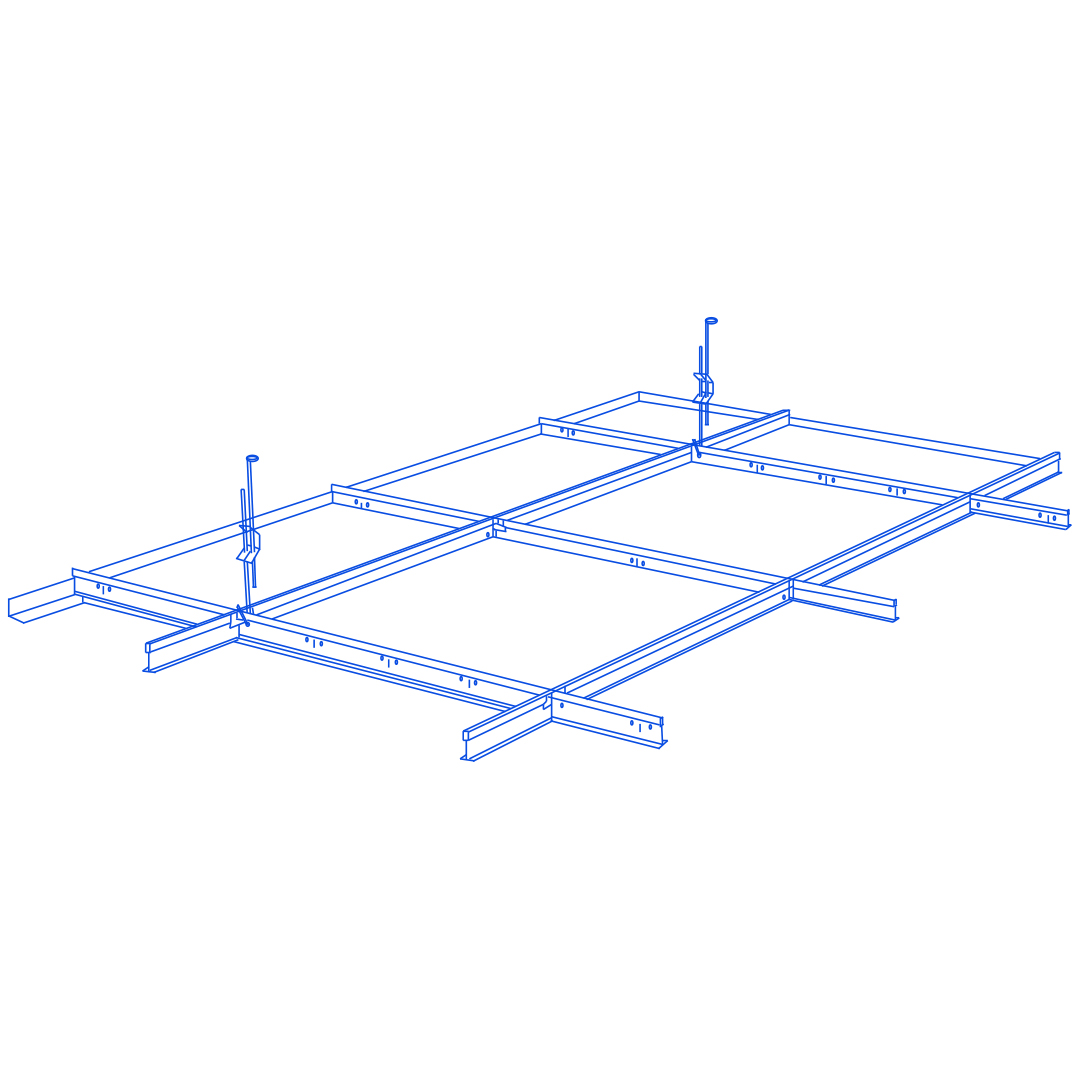
Modular ceilings are the perfect solution for suspended ceilings, offering a combination of flexibility for accessing the plenum space above, excellent acoustic properties, and interior design possibilities, blending functionality with aesthetics.
Modular ceilings are the perfect solution for suspended ceilings, offering a combination of flexibility for accessing the plenum space above, excellent acoustic properties, and interior design possibilities, blending functionality with aesthetics. The panels can be made from various materials such as gypsum, mineral fibers, metal, or wood and are available in different various finishes and dimensions. Our extensive selection includes panels designed to enhance acoustics and minimize reverberation time (echo), ensuring optimal sound quality in any space.
Beyond their aesthetic appeal, these solutions are highly practical. The modular design allows for quick and easy access to installations above the ceiling, facilitating maintenance and adaptability to the technical requirements of the space. Whether for office buildings, industrial facilities, residential units, music or film studios, classrooms or lecture halls, hospital rooms or cleanrooms, cinemas or stages, restaurants, or cafés, they are versatile and suitable for virtually any setting.
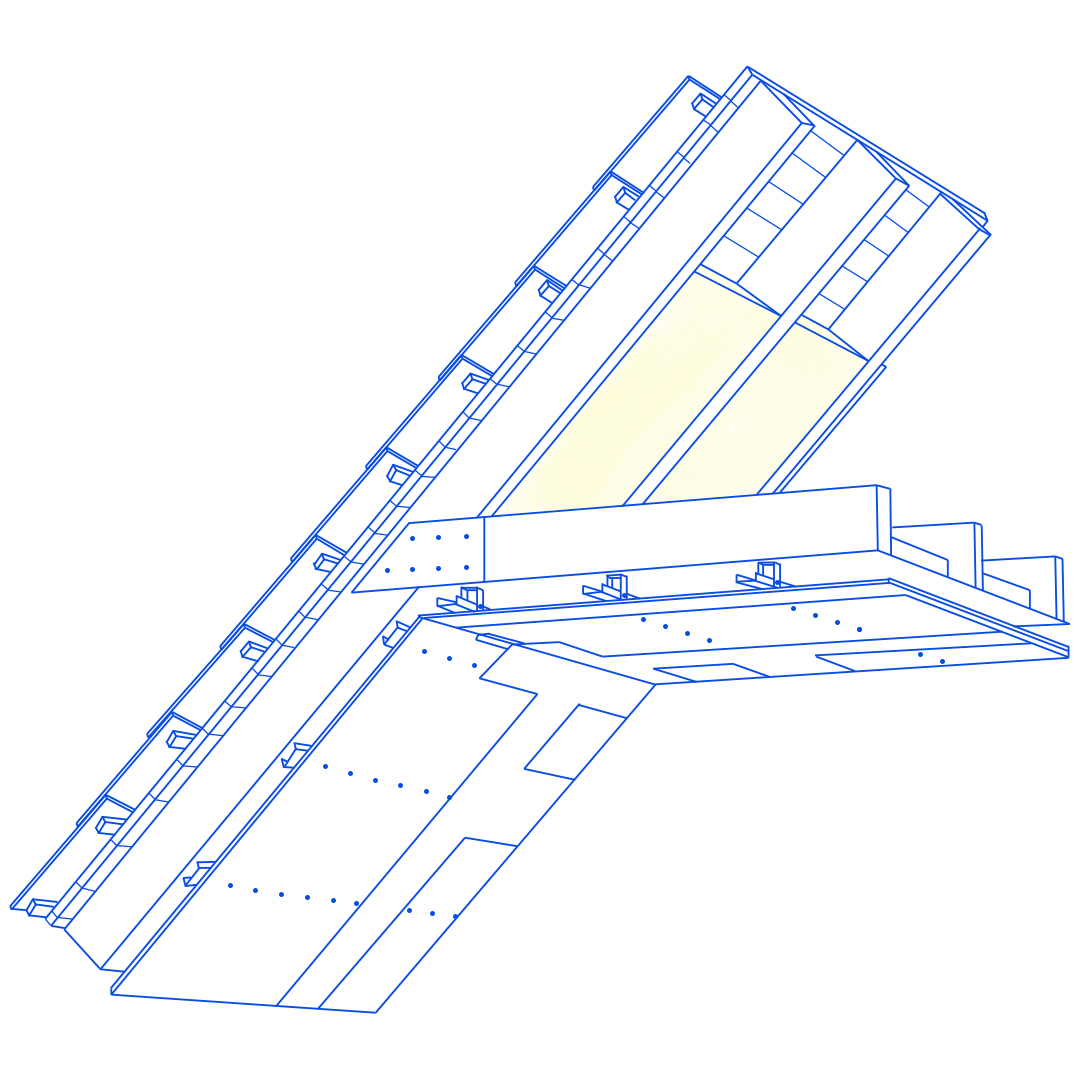
Attic lining is a crucial aspect of construction and renovation that directly impacts the energy efficiency, sound insulation, and aesthetics of the space.
Attic lining is a crucial aspect of construction and renovation that directly impacts the energy efficiency, sound insulation, and aesthetics of the space. It involves installing single-layer or multi-layer plasterboard lining on a metal framework beneath wooden rafters and beams.
Before installing the plasterboard, proper insulation of the attic is essential. The most commonly used materials for thermal insulation are mineral wool or rock wool, which are placed between the roof rafters and transversely between CD profiles. Ensure that the insulation is evenly distributed and securely fixed.
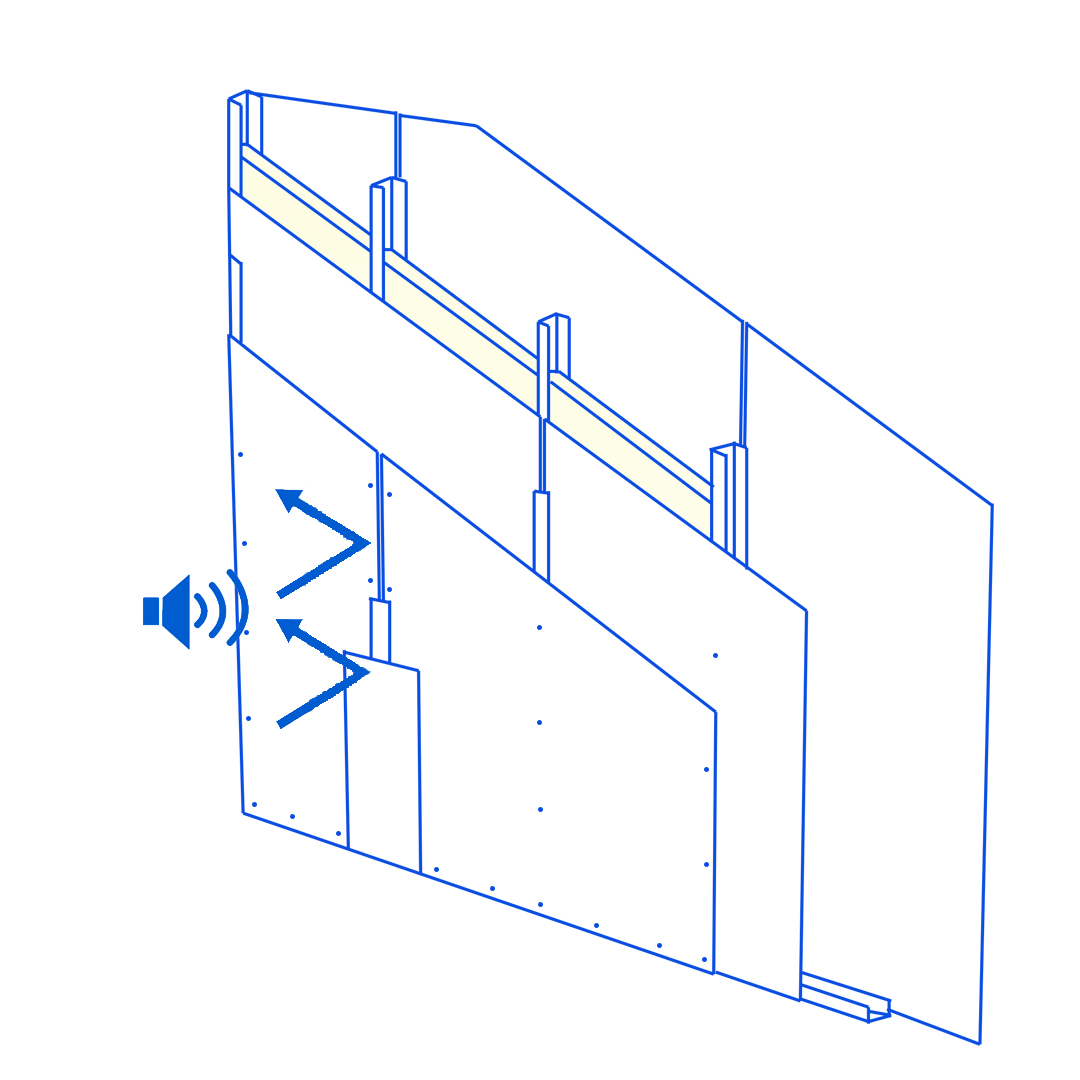
Prolonged or high levels of noise can significantly impact health and quality of life, leading to both physical and psychological challenges that affect various aspects of daily living.
Prolonged or high levels of noise can significantly impact health and quality of life, leading to both physical and psychological challenges that affect various aspects of daily living.
Sound insulation is essential for enhancing comfort and privacy, particularly in urban environments, commercial spaces, or residential settings. The primary objective of sound insulation is to minimize sound transmission through walls, ceilings, floors, or other structures, creating a quieter and more pleasant environment.
Plasterboard combined with rock wool effectively absorb unwanted noise between adjacent rooms. B+M Ritam also offers advanced plasterboards specifically engineered for superior noise protection. Made with high-density gypsum cores, these boards efficiently absorb sound vibrations, while special additives provide additional fire resistance.

While sound insulation focuses on preventing sound transmission between rooms, sound absorption aims to reduce reverberation time within a single space by minimizing or eliminating the reflection of sound waves from walls and ceilings.
While sound insulation focuses on preventing sound transmission between rooms, sound absorption aims to reduce reverberation time within a single space by minimizing or eliminating the reflection of sound waves from walls and ceilings. This is achieved using perforated plasterboard with an absorptive backing veil. In addition to their functional benefits, these boards feature designs that architects often incorporate into interior designs.
Sound absorption is essential in environments where clear sound comprehension is critical. These include classrooms and lecture halls in educational facilities, open-plan office spaces, waiting areas in various types of buildings, and complex performance spaces such as concert halls, cinemas, and theaters.
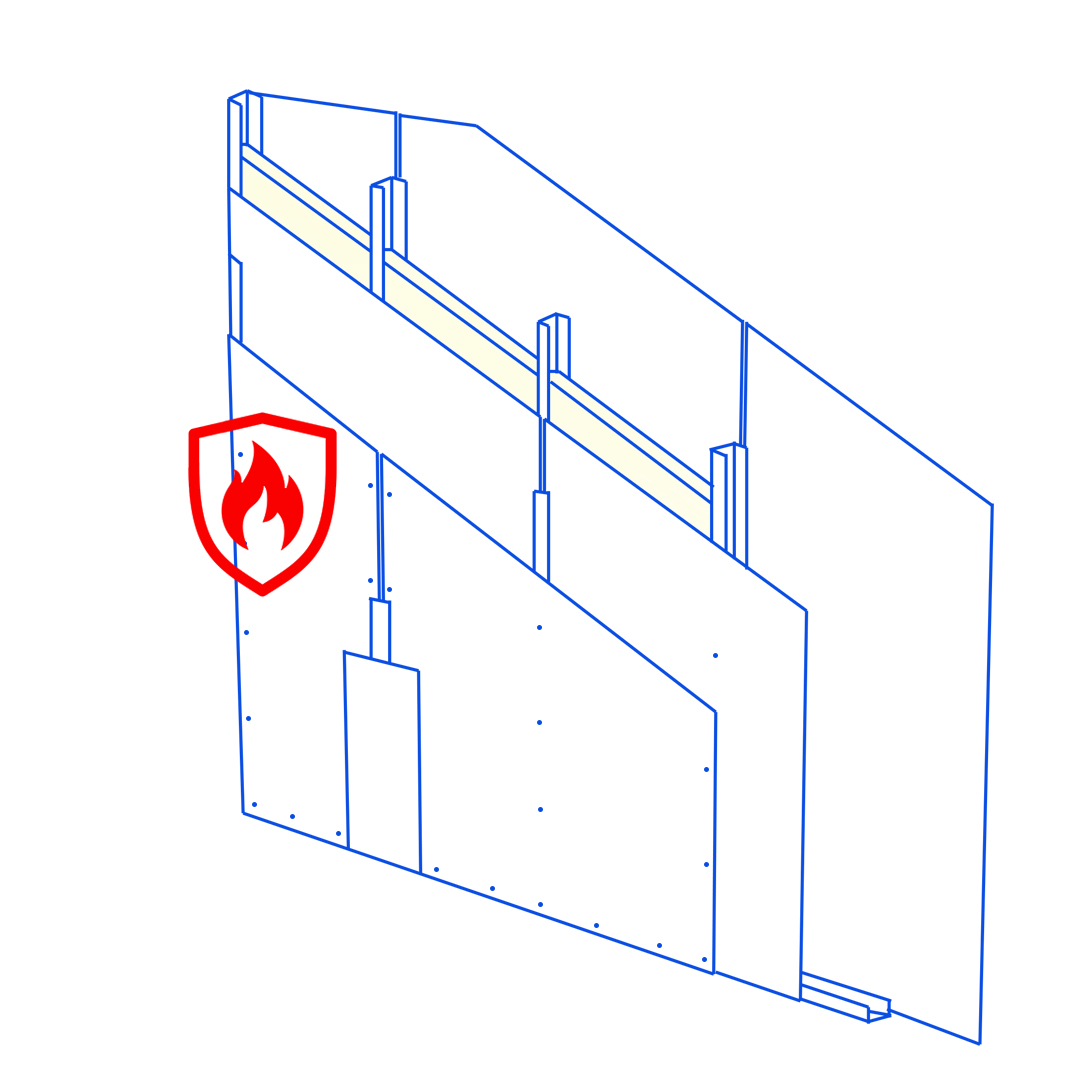
Fire protection is a critical element of modern construction.
Fire protection is a critical element of modern construction. Achieving effective fire safety relies on the careful selection of suitable materials, well-considered design, and the precise installation of systems. Fire protection is generally divided into two primary categories: active and passive. Drywall system solutions fall under the category of passive fire protection.
Passive fire protection encompasses all measures and materials designed to prevent the spread of fire and smoke within buildings while ensuring safe evacuation routes. Unlike active fire protection, these measures are integrated into the building's structure and function effectively without requiring activation or human intervention.
To ensure the safety of occupants and preserve the building's structural integrity in the event of a fire, it is crucial to limit the fire’s spread to the smallest possible area. The only way to achieve this, once the fire reaches full intensity, is to construct walls, ceilings, floors, etc., that can withstand the aggressive impact and blocking the passage of heat, flames, or toxic gases to adjacent areas.
Another aspect of passive fire protection is securing the building against nearby fires by separating adjacent structures with fire-resistant barriers constructed from A1-classified non-combustible materials. This ensures that, in the event of a fire, damage is minimized, and firefighting efforts are more efficiently focused on a single section of the building.
The combination of plasterboard, metal profiles, and rock wool provides a high level of fire protection due to its resistance to high temperatures. We offer specially developed and certified solutions for complete fire resistance of walls and ceilings, providing fire protection for up to 180 minutes.
Why gypsum is the right choice for fire protection?
When selecting construction materials for a project, the decision extends beyond aesthetics, durability, and cost-effectiveness; it is a strategic choice to create a safe and healthy environment with enhanced fire safety.
The natural fire resistance properties of gypsum, combined with its design flexibility, make it a vital component in modern construction, especially in spaces with an increased risk of fire.
Containing over 21% chemically bound water, known as crystalline water, gypsum releases this water as steam when exposed to high temperatures, effectively slowing the spread of fire.
This unique characteristic provides critical additional time for evacuation, potentially saving lives.
Moreover, gypsum is a natural mineral that does not produce toxic fumes when heated, ensuring the air remains safe to breathe during a fire.
If you have any questions or inquiries about our products and systems, our technical team is here to provide answers and recommend the appropriate solution.
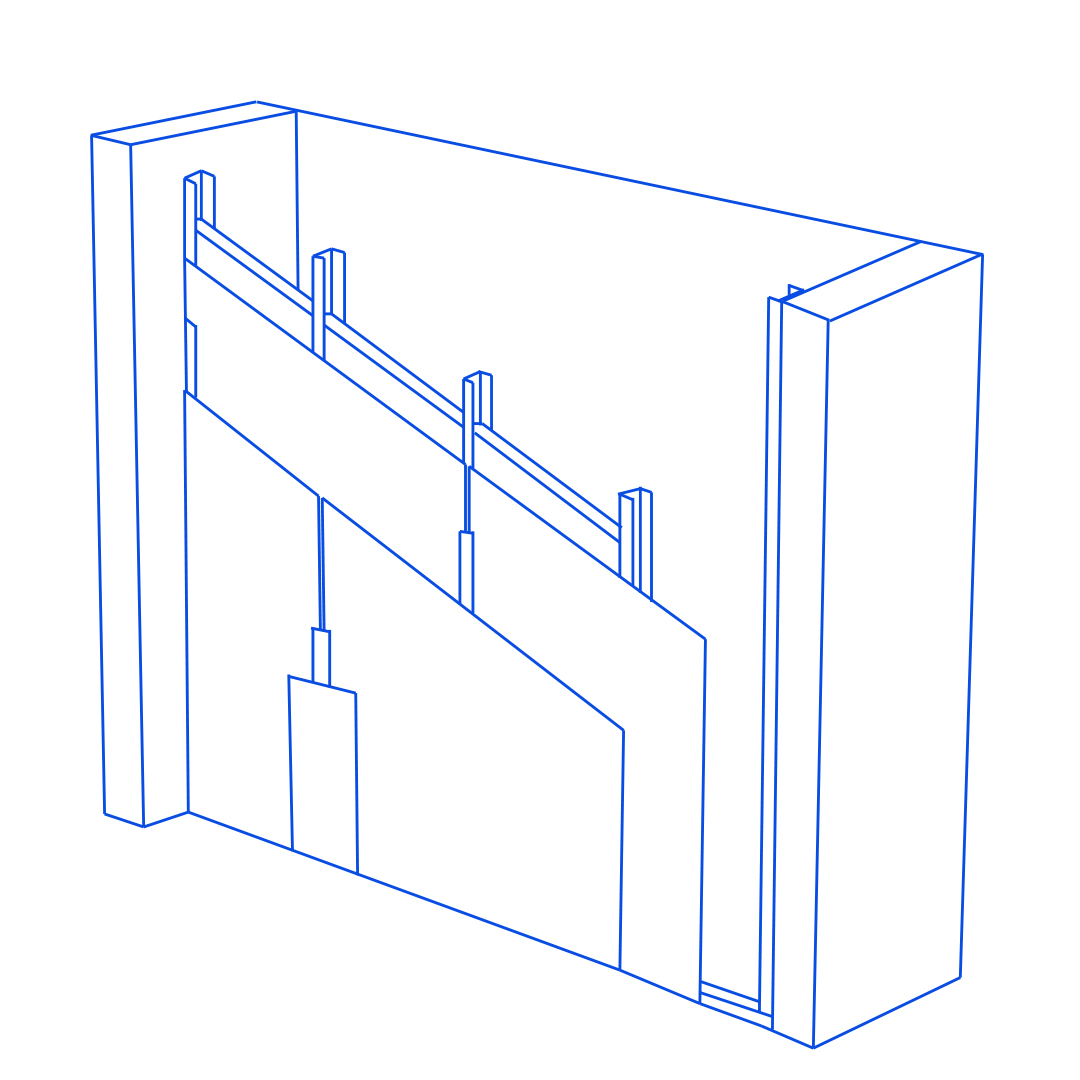
Damp spaces are areas where relative humidity often rises, and there are at least a few hours during which the space can be ventilated.
Damp spaces are areas where relative humidity often rises, and there are at least a few hours during which the space can be ventilated. In addition to kitchens and bathrooms, increased humidity can also occur in bedrooms, especially when they are smaller. Materials used for lining naturally absorb moisture, and excessive moisture can lead to mold growth.
To address this, specialized system solutions are used for lining, utilizing moisture- and water-resistant boards, cement boards, and anti-corrosive profiles.
Where cladding is exposed to splashing or water accumulation, the use of cement boards, anti-corrosive substructures, and fittings is mandatory.
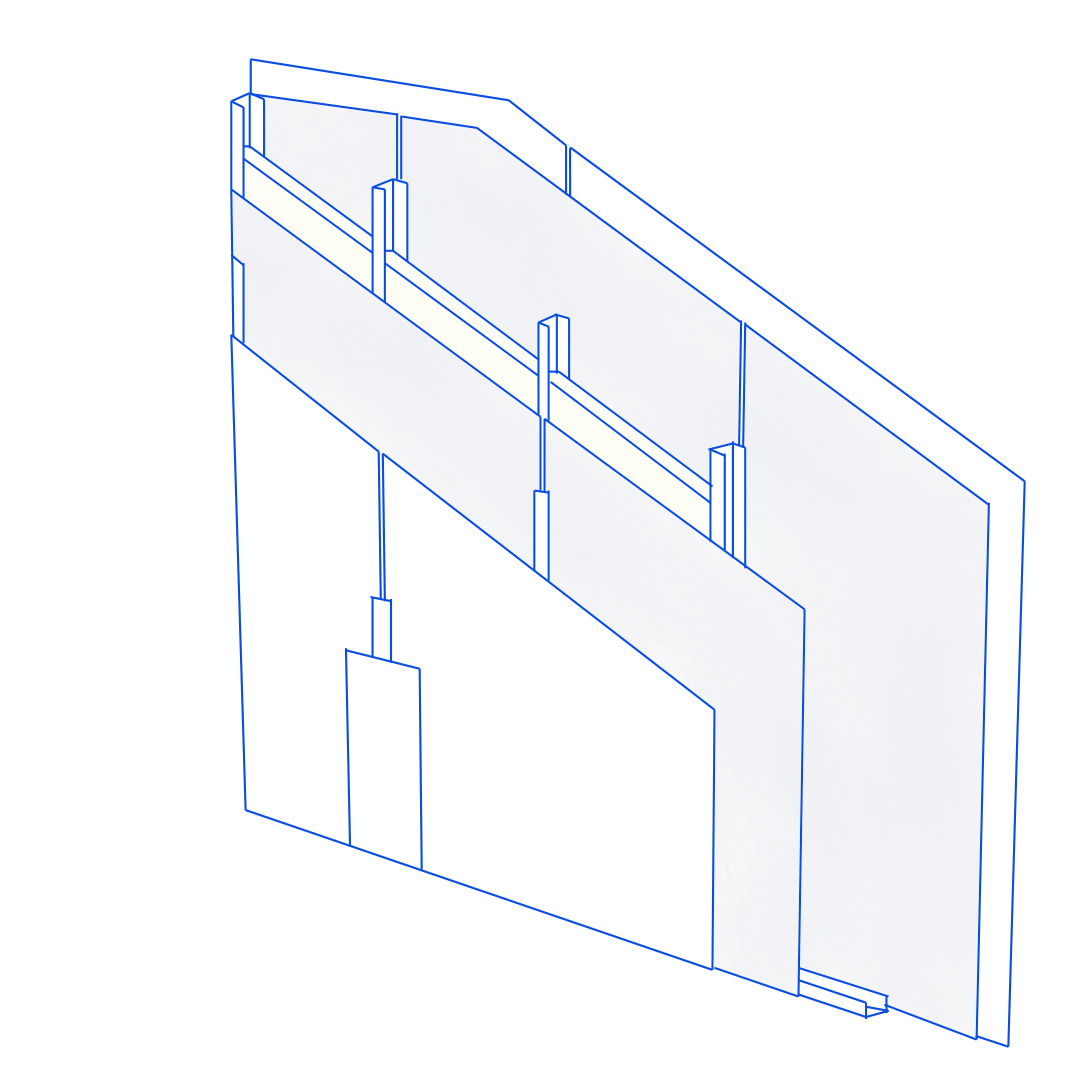
Drywall systems are also used in specific applications, such as protection against X-ray or electromagnetic radiation, facade systems, and prefabricated wall systems for prefabricated structures.
Drywall systems are also used in specific applications, such as protection against X-ray or electromagnetic radiation, facade systems, and prefabricated wall systems for prefabricated structures.
If you have any questions or inquiries about these systems, our technical team is available to provide answers and recommend the appropriate solution.